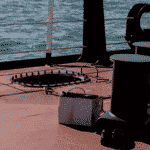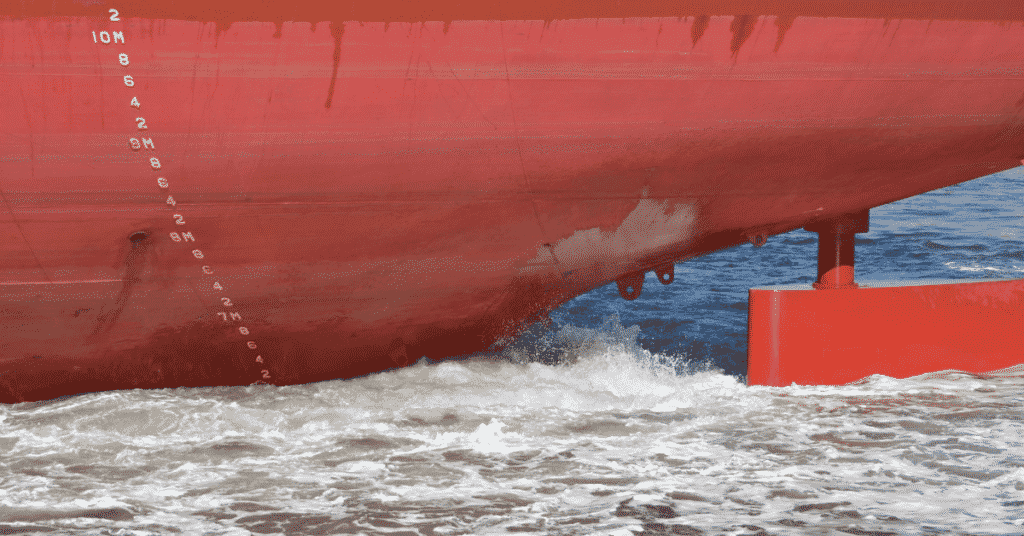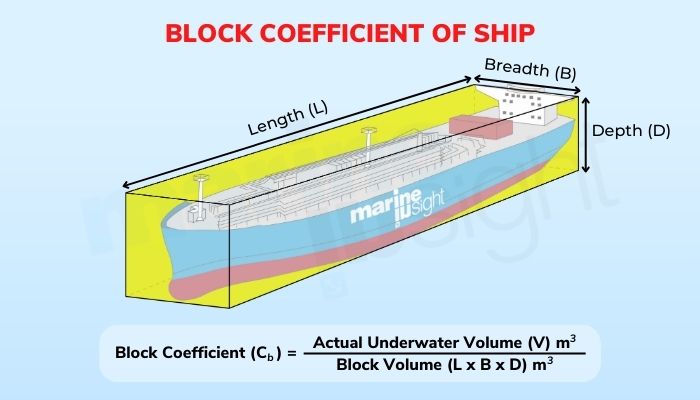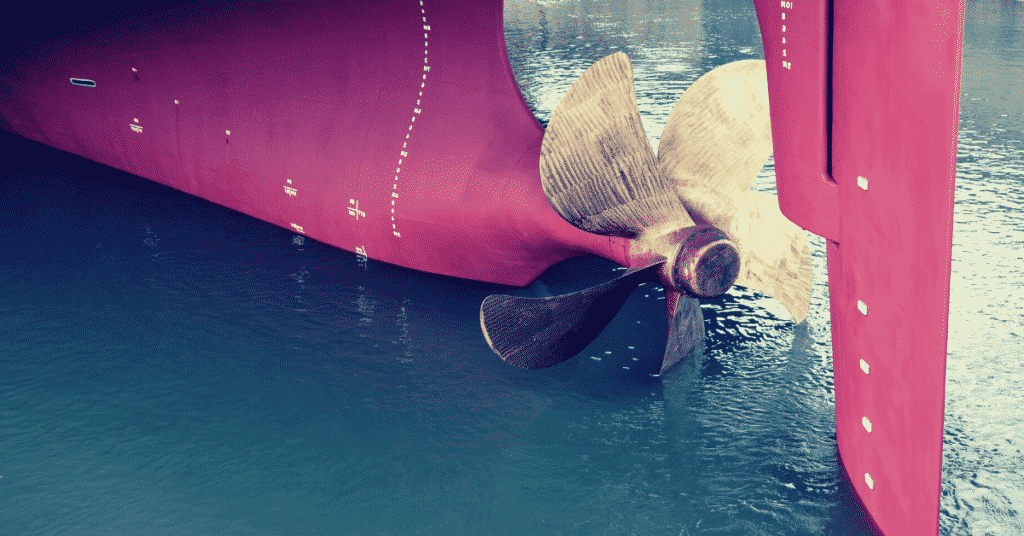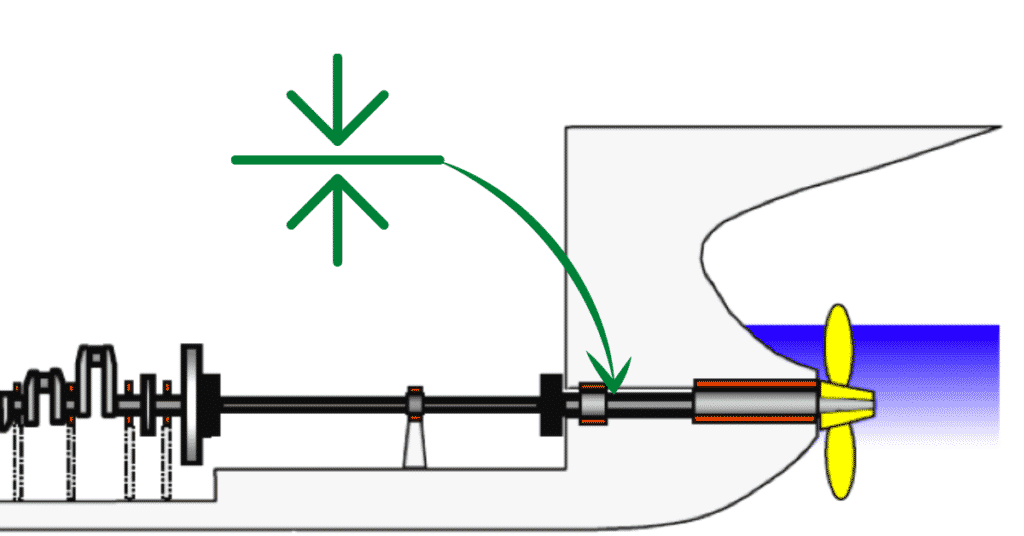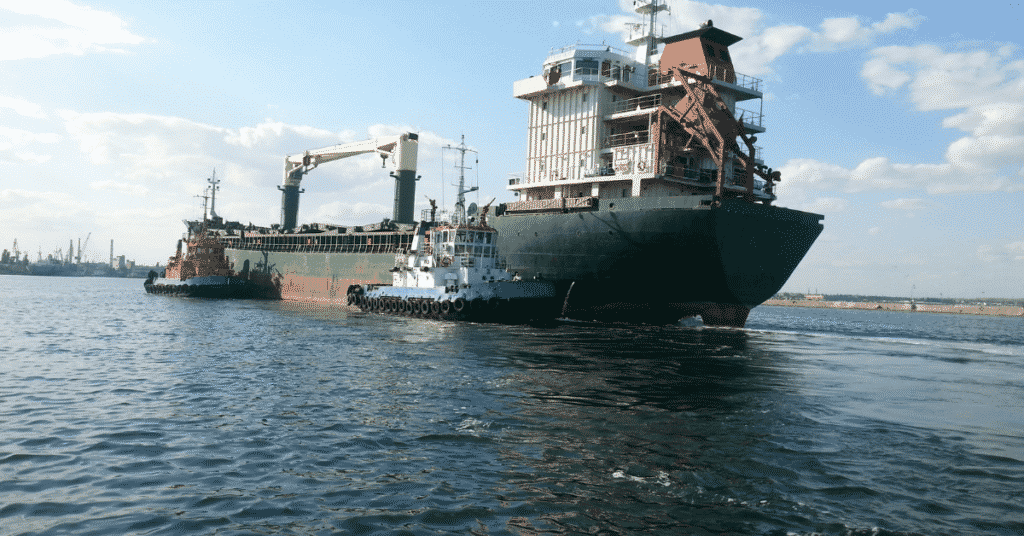What Is Underwater Keel Clearance?
With burgeoning maritime traffic and trade, the port and harbour infrastructure around the world is on a boom.
To cater for the expansive commercial fleet that are key workhorses in the global supply chain and logistics, numerous new infrastructures for ports, terminals, or harbours are being developed, and existing ones are being revamped or modernised as per the latest technology, incurring for colossal investments in economies around the world.
Moreover, channels all around the world cater to a large amount of passing maritime traffic every day, often between different countries.
Coming to navigation in restricted areas like ports, terminals, harbours, or channels, certain requirements need to be adhered to by all plying vessels to meet the standards of ‘safe manoeuvring and operation.’
The water medium in which these vessels are plying accounts for the most crucial element in these kinds of restricted environments.
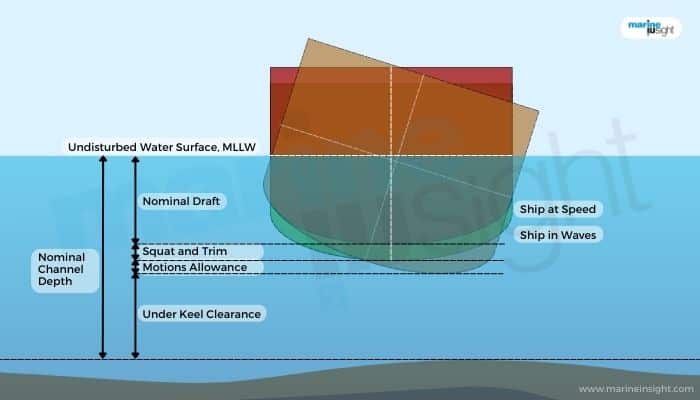
Two very important factors that are taken into consideration in these kinds of environments are:
1. Breadth: Due to dense maritime traffic, physical restrictions like landmasses and artificial constructions, and other reasons, the allowable navigable breadth or width pertaining to vessels at ports, terminals, channels, or canals are within certain limits. If a vessel’s breath exceeds this limit at a certain area of operation, it is not permissible.
For example, a large cargo vessel cannot enter an inland riverine port that can only cater for smaller vessels, or a ULCC crude oil carrier cannot enter a thoroughfare channel deemed for vessels till a definite size limit. Thus, during the construction and development stage, depending on the requirements, many commercial vessels like tankers or bulkers are built as per the guidelines encompassing their pre-determined areas or routes of navigation.
For example, Panamax is the name for categorising vessels that have their sizes within the standard limits to ply through the Panama Canal.
2. Depth: Along with breadth, depth also plays a very important role for vessels in these restricted water environments as due to low depth of water, grounding or bottom-to-surface contact of vessels is a very big problem.
The rest of our article deals with the latter.
Underwater Keel Clearance or Safe Keel Clearance and criteria
In simplest of terms, Underwater Keel Clearance or safe keel clearance is the vertical distance between the lowermost point of a floating vessel and the nearest fixed physical feature underneath the water at a certain point in time.
In other words, for all practical purposes, it is the difference between the depth of the water and the draft of the vessel at a point in time.
Hence, for example, if a vessel has a draft of 10 m and the available depth of water is 100 m, the Underwater Keel Clearance is 90 metres.
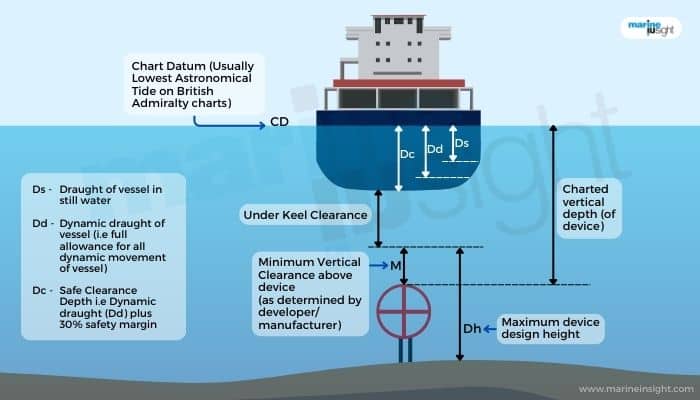
However, the seafloor is seldom an ideally flat surface. Now consider the figure below where the seafloor is sloping close to a shore or coast. Moreover, the vessel has a small trim by the bow, as shown. In this case, the Underwater Keel Clearance is the minimum vertical distance between the vessel and the seabed, as shown, in this case, the distance between the bow (lowermost point) and the upper part of the seafloor (nearest obstruction).
This simple measure, however, is of very high importance when it comes to the operation of vessels in restricted water environments. Any confined waters like ports, harbours, channels, or canals that cater for the passage of vessels regularly have a minimum requirement for a safe underwater clearance or Underwater Keel Clearance, beyond which there is a risk of grounding and vessel loss.
Underwater Keel Clearance = Depth – Draft
Now, when we speak about minimum Underwater Keel Clearance, it can be mathematically expressed as:
C = (D-T) > = Cmin
Where C is the maintained present underwater clearance for a vessel, D is the available water depth, T is the average draft of the vessel, and Cmin is the minimum required benchmark value of the Underwater Keel Clearance that is to be maintained.
Hence, if a vessel conforms to the above condition, it is said to be within safe limits of grounding risks.
Factors Influencing Underwater Keel Clearance
Whatever we have discussed above has been the simplistic definition of Underwater Keel Clearance and what it means for floating vessels. However, in the real world, as we know, no physical environment is ideal and simplistic!
In real-time, when we look at vessels coming to ports, harbours, channels, or any other water body of interest, assessment of Underwater Keel Clearance or safe keel clearance is a very, very complicated task.
This is because for a vessel floating in a real environment, determining the Underwater Keel Clearance value is far more complex than for a wooden block floating in a perfectly calm tank water, something which is closest to the ideal state.
The Underwater Keel Clearance, which is the difference between the depth and draft at a given point in time, is dependent on the culmination of several factors.
When we look at the available water depth, it is mainly dependent on external factors in the current environment under consideration. Likewise, when we look at the draft, it is governed by factors influencing the vessel and the ship-water interaction under the given conditions.
Combining the associated factors from both these groups, the factors influencing Underwater Keel Clearance are as follows:
- Water depths, bathymetry, geology, topology and hydrograph
- Waves, currents, and tides
- External weather conditions and sea states
- Vessel type, size, and hydrostatics
- Structural behaviour of the vessel about the surrounding water (sagging/hogging)
- Vessel motions and characteristics (seakeeping and manoeuvring)
- Stability effects of the vessel like heel, trim, list
- Water density
- Vessel speed
- Squatting and other hydrodynamic effects stem from the interaction of the vessel with the water medium.
The nature of the underwater terrain is the foremost factor in assessing depths. The ocean floor is seldom a flat surface. The topological characteristics of the seafloor or seabed are highly variable and never uniform. Thus, the present depth of the water body and, especially, the column of water directly in interaction with the vessel is crucial.
As explained in the above example, since the seafloor was sloping, the available depth for the moving vessel decreased as it moved closer to the shore, and this also affected the Underwater Keel Clearance.
Moreover, the characteristics of the seabed are also changing due to hydrodynamic effects that constantly alter the flow leading to changing topology and resulting in related processes like siltation and sedimentation that decrease the water depths due to the transport of deposits.
Bathymetric studies of a given area from time to time using various hydrographic methods like underwater surveys, sounding, etc., reveal the current nature of the seafloor topology and the depth distribution.
Waves and tides are the surface factors that influence Underwater Keel Clearance as well. These are further dictated by a host of external factors like sea states and, of course, the overall ensuing weather conditions.
During rough seas or harsh climatic conditions, the average wave heights increase, augmenting the depth and the resultant Underwater Keel Clearance. The same is during high tide levels.
Thus, the current water surface conditions and the seabed characteristics associated with the location under interest affect the Underwater Keel Clearance.
All these being external factors, the response of the vessel under the given conditions also plays an equally important role.
First and foremost, the size, type, and hydrostatics of the vessel determine the draft. As simple as it goes, a bigger ship with a greater displacement has more problems with Underwater Keel Clearance than a lighter vessel due to higher drafts. Likewise, a fully-loaded vessel has a greater draft and hence, a lower Underwater Keel Clearance as compared to when it is under light-load conditions.
Subsequently, the behaviour of a vessel under the given conditions comes into the scene. This behaviour can be of several kinds.
From a structural point of view, other than the linear hydrostatics of flotation and buoyancy inherent to the vessel, the waves play an important role. Global wave bending moments due to sagging and hogging effects under significant wave loading can lead to differential drafts along the length of the vessel.
Furthermore, from a statical stability point of view, the vessel can heel, trim, list and so on. This again causes differential drafts at different points in the vessel. For example, when a vessel lists towards its starboard side, the draft experienced by all points on the hull on that side is higher as compared to those on the port side.
Likewise, again going back to the above example, suppose when there is a trim by bow, the drafts decrease along the length of the vessel from fore to aft. Hence, in all such scenarios, there is a difference in the available Underwater Keel Clearance as well.
Similarly, from a dynamic perspective, on the other hand, a vessel can respond to motions in all six degrees of freedom, and this interferes with Underwater Keel Clearances as well.
Another very important concept that needs to be mentioned at this juncture is density. As we very well know, when a vessel is in a saline water medium like seawater, it has a lower draft as compared to freshwater.
This is because, for a given displacement, due to higher density, a lower amount of water needs to be displaced as compared to freshwater, which has a lower displacement.
Hydrodynamic effects of the vessel have a considerable influence on the available depth. One of the most important phenomena in this context is squatting, which is prevalent in confined water conditions, especially shallow waters.
In brief, during squatting, when a vessel moves with a significant speed over shallow water stretches due to a restricted margin underneath the hull, the flow of water increases rapidly.
This leads to decreased pressures, and thus, due to this pressure drop, there is a loss of buoyancy, leading to the vessel sinking somewhat and reducing available Underwater Keel Clearance. Stay tuned to learn more about the squatting effect in our next article.
Determining Underwater Keel Clearance
Maritime authorities, port or harbour or channel authorities, administrations, and other concerned bodies give a minimum value of UKC that needs to be adhered to by all plying ships to avoid risks of grounding. Similarly, vessels also have to assess their UKC and check for compliance. These minimum UKCs are based on certain methods.
Allowances, corrections, reserves, and errors
This brings us to the most important part of the article. As mentioned before, determining Underwater Keel Clearance is a very complicated task. This is because, as the sea environment is highly random, we can never expect a simple static calculation that involves a constant deduction between a definite depth and a fixed draft, as representatively mentioned in the first example above.
Almost all of the contributing factors of the Underwater Keel Clearance mentioned above are subject to change. As real-time estimations of all these factors are not feasible by nature due to their randomness, accommodation or allowance for all such changes is taken into account.
For instance, wave patterns significantly influence the Underwater Keel Clearance of a vessel. But measuring the exact nature of the waves influencing a vessel at any given point of time and during a specific climatic condition is almost impossible, practically speaking.
Thus, the upper reference or water level in these scenarios takes into account average wave height values from oceanographic data for giving standard values of Underwater Keel Clearance.
Similarly, due to continual changes in underwater terrain due to silting or sediment transport, the lower reference or the seafloor datum also changes. Thus, while providing standard values for the minimum required Underwater Keel Clearance, there are allowances which are considered to take care of these uncertainties, mostly being derived from bathymetric and coastal data.
Likewise, every other variable, like hydrodynamic effects, tidal levels, weather, vessel manoeuvring characteristics, and so on, are considered allowances.
For all practical purposes, all regulation requirements about minimum Underwater Keel Clearance presuppose the accommodation of these allowances into consideration. The estimation of these allowances is from data reserves from various sources, from coastal or oceanographic to meteorological, research, theoretical and empirical analysis, and surveys.
Similarly, for factors encompassing the response of the vessel, like trim or heel, relevant ship data are used based on the service area. During the estimation of the minimum required Underwater Keel Clearances, these allowances are what are known as reserves.
Now, when we consider measuring some parameter in the physical world, nothing is free of errors or inaccuracies. These errors are also taken into account as corrections while providing guidelines for Underwater Keel Clearance. In a broad sense, these errors can be of two types:
- Errors while measuring the depth
- Errors while measuring draft
The former mainly includes errors like inaccuracies while sounding, water level determinations, bottom bathymetry, and so on. The latter consists of errors mostly from the ship side, like inaccuracies in determining drafts, random draft variations, wave responses, stability problems like heel, trim, or list, and hydrodynamic effects.
Measurements, optimisation, and criteria
For all practical purposes, the calculation for Underwater Keel Clearance always concerns an upper and lower reference, the water level and the seafloor level in this case.
For rules and regulations dictating the minimum required Underwater Keel Clearance, like most other physical world problems, worst-case scenarios are taken into consideration (net Underwater Keel Clearance); that is, the most critical condition for Underwater Keel Clearance is taken into account, and a fairly higher margin is given on that. Hence, the upper and lower references are decreased and increased with a margin.
When all these reserves, allowances, and corrections are taken into account, the Underwater Keel Clearance is known essentially as Net Underwater Keel Clearance.
When these are excluded, it is known as Gross Underwater Keel Clearance.
Net Underwater Keel Clearance, which assumes the worst-case sinkage of the vessel is much lesser than Gross Underwater Keel Clearance. At the lower reference level, for instance, when the allowances for siltation, sedimentation, and so on are taken into consideration, the lower reference margin is known as the nominal bed level and is upper than the actual seafloor.
Similarly, at the surface, when the uncertainties for waves, tides, and other effects are considered, the upper reference limit is known as the water reference level. It is usually lower than the actual water level prevalent most of the time.
This is also lower than the chart datum, which gives average surface water level values along the route to navigators in their navigational charts. The distance between the nominal bed level and the water reference level is the net Underwater Keel Clearance.
Similarly, the clearance considering the exclusion of these limiting factors is gross Underwater Keel Clearance and is usually closer to the Underwater Keel Clearance value most of the time.
However, all guidelines and regulations are based on the net Underwater Keel Clearance, which considers the most critical case of sinkage. Now, the values of minimum to-be-maintained Underwater Keel Clearance for a region under authority or regulation are always on the higher side as they take into account worst-case scenarios for sinkage and offer a fairly high margin on that.
This is often a disadvantage to vessels where a higher required Underwater Keel Clearance translates to a lower draft and, at the end of the chain, loss in freight capacity. Thus, this trade-off is often tried to be optimised, with minor violations mostly accepted in almost every place.
Analytical methods based on observations and data are used in many ports, harbours, or channels, and some deduced value of Underwater Keel Clearance is given. However, for practical purposes, this has been observed to be around 10% of the vessel’s maximum draft, with an additional allowance of 5% on both sides, depending on the vessel and other factors.
Hence, most shipmasters have followed this thumb rule approximately and accordingly, many latest regulations, administrations and authorities have simplified this approach in the form of an empirical relation given as:
Min. Underwater clearance > = k X Tm
Where Tm is the maximum service draft of the vessel and k is a coefficient depending on the ship type and size.
Earlier, seafarers and navigators used to ascertain their maintained Underwater Keel Clearance by checking their average draft by their draft lines and the available depth from nautical chart data or manual sounding measures.
However, many modern vessels are equipped with technologies giving real-time readings of draft and depth, hence giving a clearer picture of Underwater Keel Clearance adherence.
You Might Also Like To Read-
- What Is The Centre Of Floatation?
- How Are Containers Stacked And What Is Stacking Weight ?
- What Is Rise Of Floor In Ships?
- What Are Vessel’s Particulars?
Do you have info to share with us ? Suggest a correction

About Author
Subhodeep is a Naval Architecture and Ocean Engineering graduate. Interested in the intricacies of marine structures and goal-based design aspects, he is dedicated to sharing and propagation of common technical knowledge within this sector, which, at this very moment, requires a turnabout to flourish back to its old glory.
Latest Naval Arch Articles You Would Like:
Subscribe To Our Newsletters
By subscribing, you agree to our Privacy Policy and may receive occasional deal communications; you can unsubscribe anytime.






